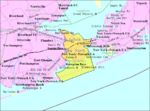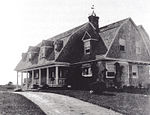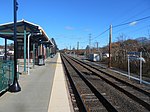The Hamptons
Geography of Suffolk County, New YorkThe Hamptons, New YorkTourist attractions in Suffolk County, New YorkTourist attractions on Long IslandUse mdy dates from March 2023 ... and 1 more
Vague or ambiguous time from March 2023

The Hamptons, part of the East End of Long Island, consist of the towns of Southampton and East Hampton, which together comprise the South Fork of Long Island, in Suffolk County, New York. The Hamptons are a popular seaside resort and one of the historical summer colonies of the northeastern United States. The Montauk Branch of the Long Island Rail Road, the Montauk Highway, and private bus services connect the Hamptons to the rest of Long Island and to New York City, while ferries provide connections to Shelter Island, New York and Connecticut. Stony Brook University's Southampton campus is located in the Hamptons.
Excerpt from the Wikipedia article The Hamptons (License: CC BY-SA 3.0, Authors, Images).The Hamptons
East Montauk Highway,
Geographical coordinates (GPS) Address Nearby Places Show on map
Geographical coordinates (GPS)
| Latitude | Longitude |
|---|---|
| N 40.884931111111 ° | E -72.501061111111 ° |
Address
East Montauk Highway
11946
New York, United States
Open on Google Maps






